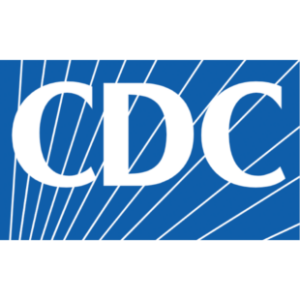The value of a root cause analysis
In recent years, a special focus of the Centers for Medicare & Medicaid Services, as well as the healthcare industry in general, has been the need for providers to ensure safe resident environments. By using a systematic approach to identify and evaluate hazards and risks, implementation of effective interventions can reduce or eliminate these dangers altogether. Such an approach is not easy, as it requires purposeful analytical skills and a thorough understanding of the investigative process that usually involves a root cause analysis. If conducted properly, a root cause analysis will enable the investigator to (1) isolate the circumstances that increased the risk of an accident or incident from occurring; (2) determine who or what was involved in the situation; and (3) assess whether the facility might have control over the causes of the event.
Once an investigator has identified a root cause, implementing effective interventions should be easy. Please analyze the following circumstances to see what problems and contributory causes you can identify, as well as the changes you would make if this situation occurred in your facility.
The situation
As a nurse entered a hospital to conduct a nursing home preadmission assessment of an 82-year-old woman about to be discharged, she came across the woman’s daughter at the nurse’s station. The daughter was in the process of anxiously reporting that her mother was having difficulty breathing, so the staff nurse grabbed a pulse oximeter and headed toward the woman’s room. Her supplemental oxygen had been off for 15 minutes so a lab technician could obtain an arterial blood gas (ABG) sample on room air, so her respirations were uneven and slightly labored. Once the technician was finished, the woman’s oxygen nasal cannula was replaced and the pulse oximeter soon indicated acceptable saturation levels.
Although the patient remained pale, she was nevertheless alert and oriented enough to converse appropriately with the nurse (from the nursing home) that came to interview her. Both she and her daughter voiced concerns about her premature discharge from the hospital and neither indicated a full understanding of the patient’s overall health and prognosis. Her diagnoses included left lobe pneumonia, asthma, congestive heart failure (CHF), essential hypertension, and osteoporosis. Before leaving, the nurse reassured them that she would ask the hospital discharge planner to talk to them about their concerns.
Despite an initial reluctance, the woman was admitted to the nursing home later that afternoon. She arrived with mild dyspnea and required continuous supplemental oxygen at 3L per nasal cannula. Her physician wrote an order to “keep oxygen saturation levels greater than or equal to 90%.” The woman was exhausted, so the staff hurriedly completed their admittance paperwork and then encouraged her to rest while they periodically checked her.
The woman slept comfortably for the next three hours, until a certified nursing assistant (CNA) discovered her sitting at the end of the bed. She asked the CNA for help to the bathroom and then requested to sit in a chair near her bed. During the process, the CNA removed her nasal cannula because the tubing was not long enough for her to move about. Throughout the ordeal, the woman did not appear to be in any respiratory distress.
About 30 minutes later, the woman’s daughter entered the room and found her sitting in the chair without her supplemental oxygen. The daughter became upset and summoned the charge nurse, who immediately reapplied the woman’s oxygen. The daughter then insisted that her mother be placed back in bed. However, the woman wanted to stay in her chair and so the two argued, which caused the woman to become very upset. She finally gave in, and was assisted back in her bed, but she insisted on sitting on the edge instead of lying down.
About this time, the woman’s son arrived and expressed concerns that his mother was discharged too soon from the hospital. He asked the charge nurse if his mother should be sent to the emergency room. The nurse examined the woman and felt that she was not in any acute distress. However, the daughter insisted that she was, and so plans were made to transfer her back to the hospital after being in the nursing home just six hours.
At the hospital, a decision was made to admit her and soon thereafter the woman’s condition deteriorated to the extent that she needed to be intubated. Meanwhile, the daughter remained angry with the staff at the nursing home and blamed them for her mother’s decline. Upon hearing this, the administrative staff at the nursing home contacted the state survey agency to report the incident, as required by their state.
In response, a survey team was sent to the facility to investigate, and while there, news arrived that the woman had died. The survey team cited the facility for failing to ensure that continuous oxygen treatments were administered as ordered by the physician. When they asked the charge nurse what the woman’s oxygen saturation levels were before reapplying the nasal cannula, she told them that she had not checked because the facility did not have a pulse oximeter.
Months later, the woman’s daughter filed a wrongful death lawsuit against the facility. In its defense, their attorney argued that the short lapse in supplemental oxygen had no direct bearing on the woman’s outcome. However, a settlement was eventually agreed upon for $302,000.
Protecting your residents and facility
Without a proper root cause analysis following an incident such as this, many providers would be quick to identify the staff involved in order to determine fault. In this situation, they could easily say the cause was human error because the CNA should never have removed the resident’s supplemental oxygen. As a result, the plan of correction would likely include some form of disciplinary action or maybe even termination of employment. But would that be enough to actually reduce or eliminate a similar incident from recurring if another CNA is faced with the same set of circumstances? Possibly so, if the CNA’s actions were the only cause for the incident, but if you look closer at the situation, there were indeed several other causes. In fact, most incidents and accidents that occur in nursing facilities are complex and multicausal and yet again, some may even lack a true discoverable root cause at all. The only way to avoid jumping to a premature conclusion that leads to inadequate corrective actions is by taking the time to conduct a proper root cause analysis.
If an incident or accident occurs and it is determined that a root cause analysis is necessary, it is essential to follow a systematic approach that ensures the collection of all information required to thoroughly and precisely analyze the event in order to determine the true cause(s). To simplify the root cause analysis, it helps to start with the incident and investigate backward by looking at possible proximal causes that preceded the event. Additionally, it is best to use a report outline for consistency and completeness.
The Tennessee Department of Health Bureau of Health License and Regulation Division of Health Care Facilities has developed an excellent report outline in which six universal proximate causes can be analyzed by answering simple Yes or No questions. If an answer is No or false, the investigator develops a plan for improvement and then measures to assess the effectiveness of the risk reduction strategies. The “TN Root Cause Analysis” tool can be found at https://ltlmagazine/RootCauseAnalysis. By using this tool with the preceding situation, the following proximal root causes can be easily identified:
Policy or Process (system) in Which the Event Occurred:
The system in place (i.e., policy for following physician orders) related to the event was not carried out as intended because the nurse did not check the order for proper administration of the oxygen as prescribed by the physician.
An effective policy for checking oxygen saturation levels was not in writing, communicated, etc.
Human Resources (factors and issues):
Human error contributed to the outcome when the CNA removed the woman’s nasal cannula and did not replace it.
Environment of Care (including equipment and other related factors):
The physical environment was not sufficient for the treatments being carried out because the oxygen tubing wasn’t long enough for the resident to move about.
Emergency and failure-mode responses were not planned, as the nurse did not check the resident’s oxygen saturation levels before or after replacing the nasal cannula.
Controllable equipment factors contributed to the event because the staff did not anticipate the need for a pulse oximeter even though they knew it would be needed from the preadmission assessment and subsequent physician order.
Information Management and Communication Issues:
Necessary information was not available to the CNA, as a care plan had not yet been developed and there were no signs in the woman’s room to denote that continuous supplemental oxygen was required.
Communication among participants was ineffective because the siblings were not knowledgeable about their mother’s disease process and the daughter demonstrated poor coping skills that actually increased her mother’s anxiety, exacerbating her condition.
For each of these root causes, a plan should be developed to prevent recurrences of the problems, as well as a monitoring system to evaluate its effectiveness. If a corrective action is not working, then it probably will be necessary to change it, fix it, or implement an alternative. All of this information should be documented and kept within the facility’s Quality Assurance program. By taking these necessary risk management steps, you can protect your residents and facility, now and into the future.
Linda Williams, RN, is Long-Term Care Risk Manager for the GuideOne Center for Risk Management’s Senior Living Communities Division. She previously served as Director of Nursing in a CCRC and as a nurse consultant for two corporations with numerous long-term care facilities in Iowa. The GuideOne Center for Risk Management is dedicated to helping churches, senior living communities, and schools/colleges safeguard their communities by providing practical and timely training, and resources on safety, security, and risk management issues.
For more information, phone (877) 448-4331, ext. 5175, or e-mail slc@guideone.com. More information is available on the Center for Risk Management’s Web site at https://www.guideone.com. To send your comments to the author and editors, e-mail williams1108@iadvanceseniorcare.com.
Long-Term Living 2008 November;57(11):34-37
Related Articles
Topics: Articles , Facility management , Leadership











